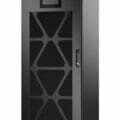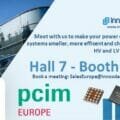By Andy Graham, Solutions Manager, SolutionsPT
Digital transformation means the world to us. This is our mantra and you will see it running through absolutely everything we do. It is a powerful force for good within industry, and more importantly, the people who work in it. From our experience of working across a variety of sectors with varying challenges, we wanted to highlight key capabilities of industrial facilities that are advanced in digital transformation and how it future-proofs their operations. Looking to companies that are already advanced in DX can be daunting for smaller enterprises that have smaller budgets, but our vision is that DX can be successfully applied by every enterprise in a step-by-step approach that delivers return on investment at every stage.
An abundance resource
It is well understood that the lifeblood of digital transformation is data. Modern industrial plants are bristling with raw data capture points and few industrial organisations of any size lack the data required to start to make huge efficiency improvements. But data is not transformational until it is contextual and used to drive insights that can be used to make improvements. The notion that digital transformation requires huge investment in new equipment is erroneous. More important, by some distance, is taking a strategic approach to all investment to ensure that it delivers not just a spot fix to an issue, but a continuous improvement to the overall business. Understanding how to identify and undertake a digital transformation strategy is not easy, but with the right approach and the right help that is tailored to your specific needs, it can be simple.
Digital transformation needs to be viewed with an edge-to-enterprise outlook, taking relevant data from as many sources as possible and contextualising it to offer the right information to the right users in a timely way, from operators on the shop-floor to managers in the office and owners in the boardroom, the same digital information thread should inform decision making.
While at a conceptual level, the idea of free-flowing contextualised data delivering insights for continuous improvement is fairly simple, it’s easy to get bogged down in specifics when trying to offer an example. This is a function of how all-pervasive the impact and advantages of digital transformation are. Having said that, examples can be helpful as a way of seeing the kind of change that becomes possible.
All industrial environments need maintenance, so maintenance planning and management is a great case study. Data around maintenance has also been collected and used extensively for a long time in order to inform maintenance procedures. From how often parts fail, to how long it takes to replace them and whether to stockpile parts, to measuring Mean Time To Failure (MTTF) to help inform servicing and so on, the data around maintenance has long been scrutinised. What’s changing with digital transformation technologies and practices is the breadth of data, insight levels and speed at which data can be brought to bear. Now, with relatively cheap IIoT sensors, even older equipment and machinery can be sending live data to a central repository. Seeing how hot a machine is running, for example, tracked against its load, could give you an idea about an issue long before an outage. Perhaps vibration is also being measured, perhaps the machine is in a remote location but a CCTV camera feed can also offer a visual. Perhaps the maintenance team have devices that link them directly into live data from the machines they are tasked with maintaining and can set their own schedules, draw down manuals and/or use mixed reality to speed up diagnostics or procedural fixes.
Perhaps the company in question has several maintenance teams tasked with managing multiple distributed assets (such as a Water company) and their movements and workloads are managed centrally by management with a 360 degree 7/365 view of all equipment. Perhaps preventive maintenance also includes using other forms of data (such as weather forecasting) to reduce risk to systems. Perhaps specialised OEMs have access to certain usage statistics to offer direct support to your assets. Perhaps, in the future, they’ll continue to own and maintain that asset because they can offer it as a service package
The possibilities are, quite literally endless. And this is just a flavour of some of what is possible around maintenance in a digitally transformed company. There aren’t many companies using all of these mechanisms yet, but getting your company on the strategic path to this type of activity is vital for the sustainability of the business. In short, as time goes on, your company will be competing with other companies that are bringing the efficiencies associated with digital transformation to bear.
Data as an asset
To achieve successful digital transformation, businesses need to recognise data as an asset. Modern plant equipment and machinery is almost always supplied with the sensors to collect data, and, as mentioned, for legacy assets that don’t have such capability, IIoT sensors can be added at a low cost allowing enterprises to reach these next steps of digital transformation. The point is, digital transformation certainly isn’t the preserve of large companies with large budgets. Digital transformation is achievable for any enterprise and the most advanced in DX are already making their data work hard for them. It is often an assumption from companies less advanced in DX that a successful transformation will mean a complete (and costly) overhaul of all operations while replacing all assets with brand-new shiny machines, but this couldn’t be further from the truth. The tools for a successful transformation already exist within most industrial facilities, it just takes a digital transformation partner to show how to harness them.
All about the operator
While it is tempting to measure a successful digital transformation journey in throughput numbers, reduced maintenance, or improved energy efficiency, this misses a key function of it that SolutionsPT believes is perhaps the most vital part of the journey. How can a digital transformation mindset improve the work-life of the humans in your business so that they have the tools to be more productive and to deliver continuous improvement.
Humans are still, by some margin, the most important asset in any industrial organisation. While talk of increased automation and artificial intelligence may, at first glance, appear to downplay their importance, we have seen first-hand that technology and data, at their most powerful, enable the human element, rather than replace it.
That’s why a focus of digital transformation has to be the day-to-day operations, and as IT and software continue to make inroads into traditional engineering environments the importance of low-code and no-code solutions grows. If a system deployed to improve efficiency is complex and requires a specific IT or data-management expertise to install or manage, it creates another issue. What we have seen from enterprises already advanced in digital transformation is the deployment of platforms that can be managed by all operators, no matter where they sit on the IT-OT spectrum. Low-code platforms also allow for easy scalability, since once one machine, line or facility has been coded, it can be rolled out across multiple instances within the organisation very easily; perfect for growing businesses that are expanding into new areas or introducing new products, and perfect for those who need to run smaller pilots of new approaches before full commercial roll-out.
It is also important to consider the way digital transformation affects the workers themselves. An advanced DX capability, requires something commonly becoming known as ‘the connected worker’.
The Connected Worker is connected, via data, technology and dashboards, to the plant, to one another, and to those in the control room, whether they are at the same location or not. All parties are able to access the same information which is augmented to suit the needs and responsibilities of the user. An engineer at a remote facility can use the devices they have at hand to seek assistance from a colleague, use augmented reality to see below the surface of an asset, or simply access training information if they are new in the role. No matter the need, digital transformation has the ability to connect each worker with the information and tools they need to carry out their work effectively, more efficiently than ever before.
Reaching the bleeding edge of digital transformation capability might seem like an insurmountable challenge for small enterprises, but it doesn’t need to be. Having SolutionsPT onside as a dedicated digital transformation partner now comes with an exciting new subscription model called AVEVA Flex. Rather than dealing with long licensing agreements that lock companies into certain solutions, it makes the entire AVEVA offering available to deliver the most value specific to your needs while being able to explore new capabilities without excessive CAPEX or risk.
Enquire about a flexible approach to digital transformation today.








